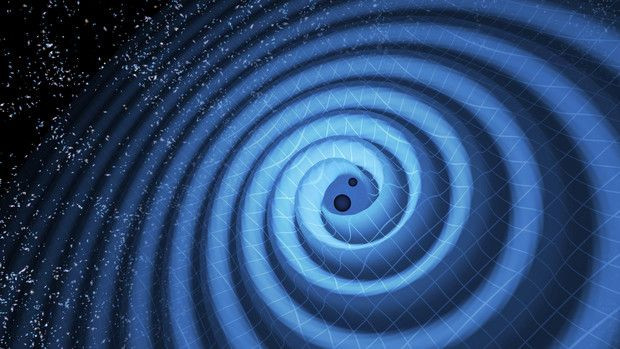Gravitational Waves: LIGO Detects Another Binary Black Hole Collision

When scientists from the Laser Interferometer Gravitational-Wave Observatory announced on Feb. 11 that they had detected, for the first time, gravitational waves — ripples in space-time, which in this case were caused by the collision of two black holes into one — it was a pretty big deal. Four months later, LIGO scientists have done it again.
“The two LIGO gravitational wave detectors in Hanford Washington and Livingston Louisiana have caught a second robust signal from two black holes in their final orbits and then their coalescence into a single black hole,” a statement on LIGO’s website said. The event was observed Dec. 26, but was announced Wednesday, since the data had to be analyzed and verified.
The black holes that coalesced into one were about 1.4 billion light-years away, roughly the same distance as the first pair of black holes observed earlier, which were 1.3 billion light-years away. And like the first observation, the second also confirmed the bedrock of modern physics theory, otherwise called Albert Einstein’s general theory of relativity.
However, there are differences between the two observations — made using two detectors in Hanford, Washington, and Livingston, Louisiana, a distance of about 1,900 miles.
For one, the two black holes in the second observation were less massive (14 and 8 times the mass of the Sun) than the binary pair involved in the first detection (36 and 29 times the mass of the Sun). Consequently, the signal in the second observation was weaker.
Two, the gravitational wave arrived at both the detectors at almost the same time, leading LIGO to conclude that the source was “likely overhead or underfoot.” The first signal, detected on Sept. 14, 2015, had arrived at Louisiana before it reached Washington, implying a southeast origin.
Also, interestingly, one of the binary black holes in the second detection “was spinning like a top,” LIGO said, the first time it could say so with confidence. The spin suggested that it may have sucked in mass “from a companion star before or after collapsing from a star to form a black hole, getting spun-up in the process.”
During the first observation period, a third likely detection was also made in October 2015, and the data from all three will help scientists study “the rate of black hole coalescences in the Universe based not on theory, but on real observations.” LIGO’s second observation period will start in fall 2016. A third detector, Virgo — near Pisa in Italy — will also participate in the second observation period.
© Copyright IBTimes 2024. All rights reserved.





















